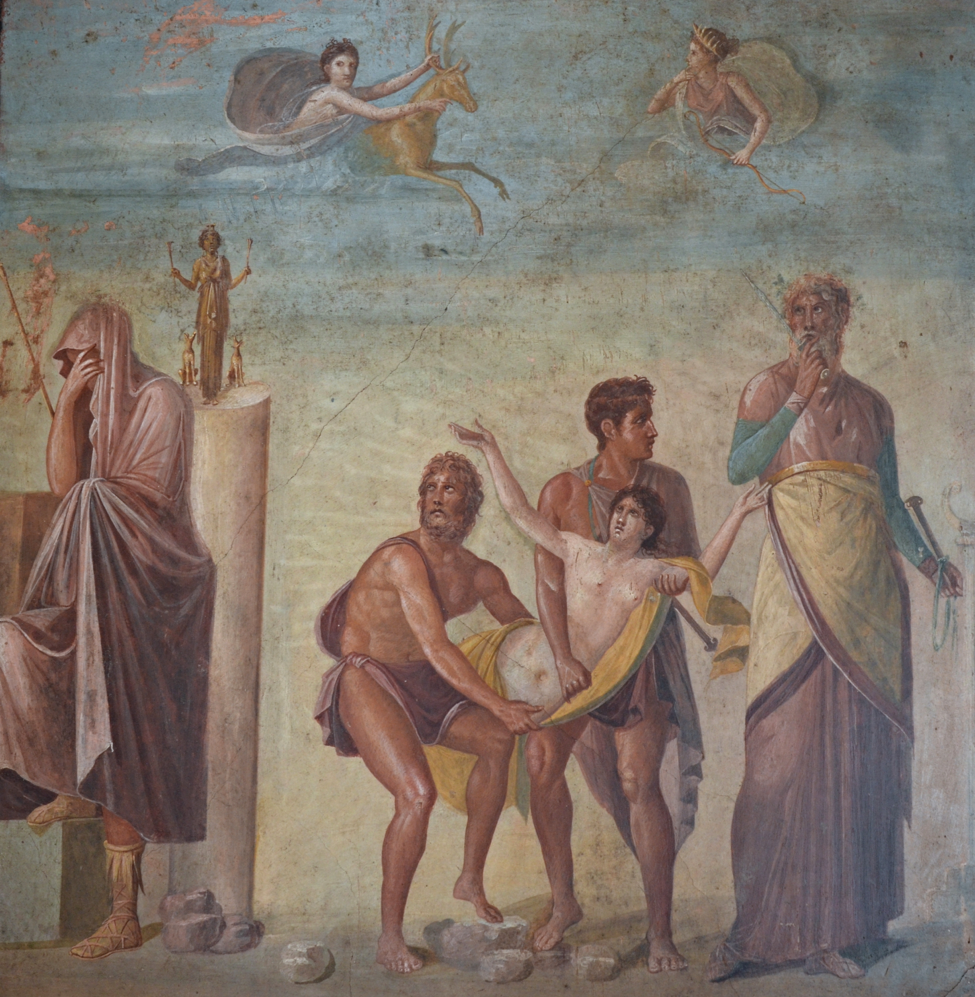Agamemnon was the King of Mycenae [see Argos on map] and brother to Menelaus, the King of Sparta [map]. (Together the brothers are called the Atreidae, meaning “the sons of Atreus”.) When Menelaus’ wife, Helen, was abducted by the Trojan Prince, Paris, the Atreidae sought out their Greek allies to sail to Troy and bring Helen back; they also planned to punish the Trojans for stealing Helen of Sparta and violating Xenia (see Xenia). All the Greek allies were planning to meet at Aulis. The process of gathering their forces took a few years because the kingdoms were spread out and unconnected. Finally, the greatest Greek warriors gathered at Aulis and were ready to cross the sea to attack Troy [see Ilium/Troia on map]. However, the wind kept blowing against them, preventing them from sailing out towards Troy. This kept up for weeks, long enough for the troops to get restless and consider going home. The seer Calchas was among the group and he told Agamemnon that he had angered the goddess Artemis and the wind would not allow them to make their voyage until Agamemnon sacrificed his daughter, Iphigenia, to the goddess. Sources differ on why exactly Artemis was so angry with Agamemnon. Some say he boasted that he could hunt better than the goddess, while others say that he had not done anything; she just was angry at him.

The Sacrifice of Iphigeneia by François Perrier (1632-1633) in the Musée des Beaux-Arts in Dijon, France
With the campaign in trouble and the Atreidae’s reputations at stake, Agamemnon chose to sacrifice his daughter. He sent Odysseus and Diomedes to his wife, Clytemnestra (who happened to be Helen’s sister), to tell her that he had arranged a marriage between their daughter, Iphigenia, and the hero Achilles and Achilles wished to marry her before he went off to fight. Agamemnon told this lie because he suspected that if he told his wife the real reason why he wanted Iphigenia to come to Aulis, that Clytemnestra would not go along with the plan. But Clytemnestra suspected nothing; she prepared her daughter for marriage and sent her off to Aulis. Once there, Agamemnon sacrificed his own daughter (though some sources contend that Artemis replaced her with a deer at the last second and whisked the girl off to live as her priestess among the Taurians). This action earned Agamemnon the undying hatred of his wife.

A fresco of the sacrifice of Iphigenia from Pompeii in the National Archaeological Museum in Naples



